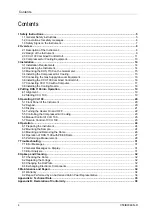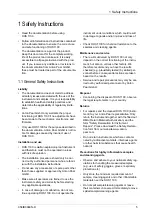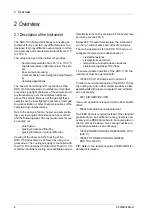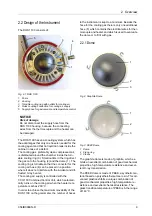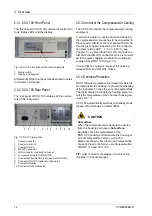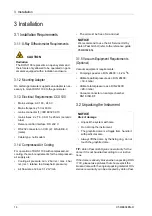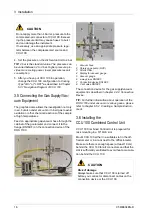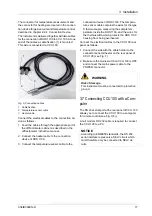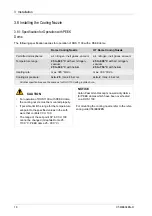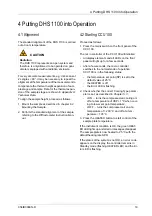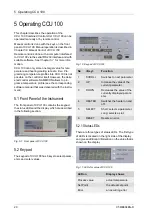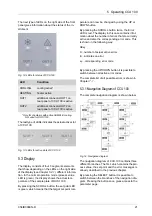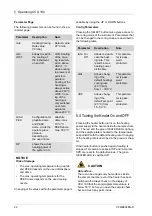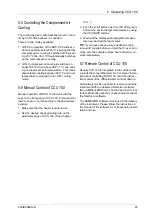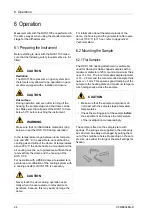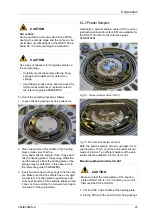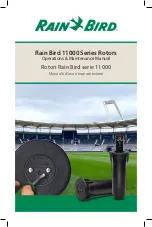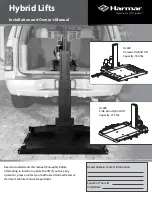
2 Overview
10
C58IB004EN-D
The dome is fixed to the housing of the DHS 1100
by a fixing ring made of aluminium with three clasps.
Vacuum tightness is guaranteed by an O-ring in the
housing.
TIP:
For a diffractogram of graphite and PEEK,
please refer to the reference guide C58IB002EN.
The dome is also available as spare part, refer to the
reference guide C58IB002EN.
Anton Paar GmbH gives no warranty for the dome if
it is not handled according to our instructions.
2.2.2 Dome Cooling Nozzle for PEEK Dome
For more information about operation with PEEK
dome refer to the reference guide C58IB002EN.
2.2.3 Housing and Internal Parts
Fig. 4: Main parts of DHS 1100
1
Springs for fixing the sample
2
Sample plate
3
Temperature shieldings
4
Pressure relief valve
5
Bore holes for mounting the DHS 1100
6
Cooling fins
7
O-ring for the dome
8
Fixing screws for the dome
The housing of the DHS 1100 is made of anodized
aluminium and is therefore very light. It contains
cooling fins which provide sufficient heat transport
from the heating plate of the DHS 1100 to the sur-
rounding atmosphere.
The heating plate of the DHS 1100 is made of alu-
minium nitride (AlN), a ceramics with excellent tem-
perature conductivity and good chemical resistance.
In case of damage, the sample plate can be easily
replaced by a new one.
The springs for fixing the sample are made of Inco-
nel and can be loosened very easily by using twee-
zers.
TIP:
For a diffractogram of aluminium nitride and In-
conel, please refer to the reference guide
C58IB002EN.
The heater is located just underneath the AlN heat-
ing plate. The design and the excellent temperature
conductivity of the AlN plate guarantee high tem-
perature uniformity across the heating plate. The
thermocouple is located below the middle of the
heating plate.
CAUTION
• Always lift the dome by the fixing ring. Do not
touch the graphite dome.
• Make sure that the air cooling is on to guar-
antee sufficient cooling of the DHS 1100
housing and the dome during operation at
temperatures higher than 200 °C.
• Never touch the dome during operation,
especially while it is evacuated or at elevated
temperatures!
• If the inner surface of the dome has become
coated with evaporated sample components,
clean it with a dry cloth.
• Always use a dome cooling nozzle for opera-
tion with PEEK dome.
8
5
6
7
2
1
3
4




